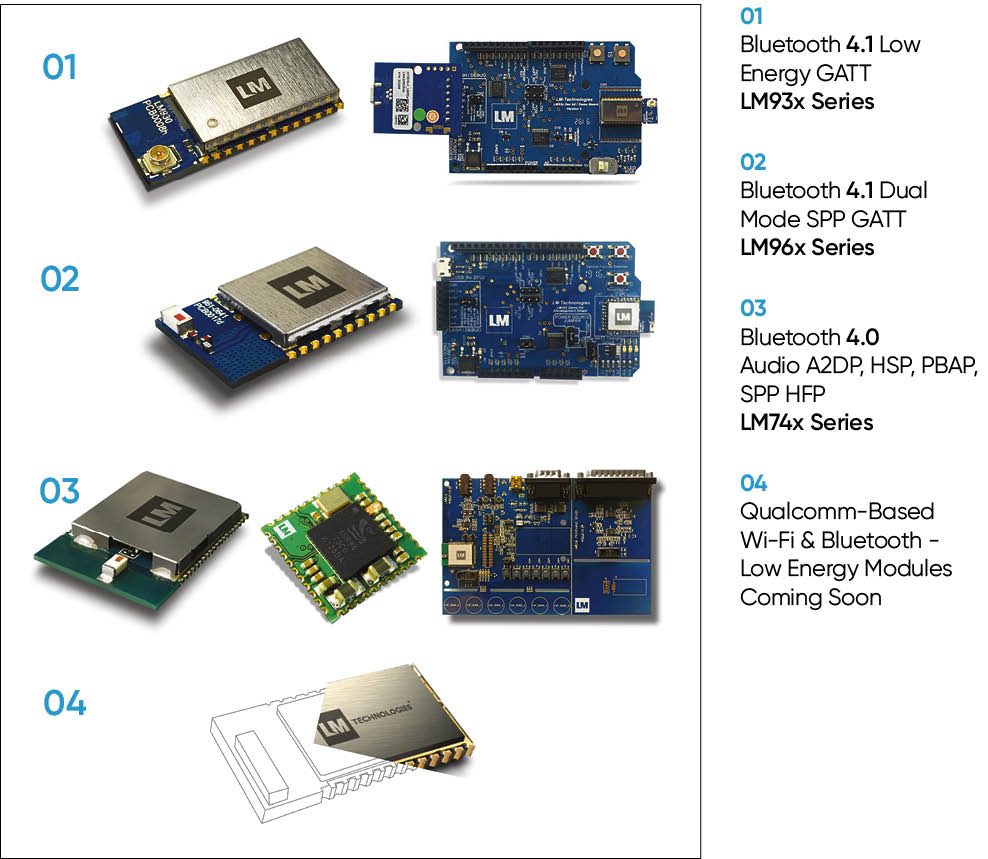Why is connectivity so vital to the industrial sector in coming years?
The number of devices connected to the internet of things (IoT) continues to grow rapidly. According to Ericsson, it is growing at a rate of 23 per cent annually and of the 28 billion devices it predicts will be connected by 2021, 16 billion will be IoT devices. For the industrial sector to take advantage of that, strong connectivity is critical. The IoT encompasses many technologies, but wi-fi and Bluetooth will account for a massive portion of the estimated market. As a Qualcomm manufacturing partner, LM Technologies is in the right position to take advantage of the IoT growth due to the range of integrated circuits (ICs) supported by the chip maker. We also have access to other chip makers, such as Cypress Semiconductor and Realtek, offering our company a wide selection of chipsets focused on Bluetooth and wi-fi technologies.
What is the most suitable IoT development option for industrial companies?
LM offers a very high level of development support to its customers to ensure they are aware of the options available. With our close ties to the IC vendors, we tend to work with early-silicon and are designing products with ICs that are not yet in the market. This year we release the world’s first dual mode module embedded stack using Qualcomm’s CSRb534x range of ICs, keeping our research and development focus at the very forefront of the latest technology.
What new innovations are in the pipeline in this space?
With our first Qualcomm Atheros-based module, we are aiming to offer a sub-$10 wi-fi module with its own editable stack, which we see as the perfect platform for customers’ application development. Being the only Qualcomm Atheros module partner in Europe, we believe our new Atheros-based range of modules will enable multiple IoT companies to advance their products’ capabilities. All the Atheros chipsets are -40C rated and offer low-power consumption. This year, LM will also release the first Bluetooth 4.1 serial adapter, which will be able to communicate with Apple devices without the need for an Apple authentication chipset, negating any Apple product commission. The current EPOS market is using more Apple devices than ever before and being able to interface with non-Apple authentication devices is key to expanding the device choice in this market.
What competitors do you have in Europe?
There may be several other wireless module companies, but LM’s links with IC vendors and the customer-supported design process we offer is unique in Europe. Some similar companies may have access to one or even two of the top IC vendors, but no other company has the same ICs within their modules. We are also the only company to offer customers a dedicated solutions team that supports them throughout the life cycle of their product.
Why is energy efficiency so important to wi-fi connectivity in the industrial IoT?
While the IoT includes devices across all wireless platforms, the majority of IoT devices are battery powered. Therefore, energy consumption is a key factor when companies are selecting the technology for their IoT device. A good example of the difference that LM offers is within one of our recent developments, where we developed a key fob that needed to send data to a connected device every two seconds. The customer wanted the product to last 12 months using only a 200mA coin cell battery and initial testing indicated it wasn’t possible. However, our team’s application development was able to reduce consumption beyond the original design parameters of the chipset to meet the customer’s specification. This development epitomises the close customer collaboration that stands LM apart from its competitors, as well as our commitment to customers’ target specifications.
For more information please visit www.lm-technologies.com

